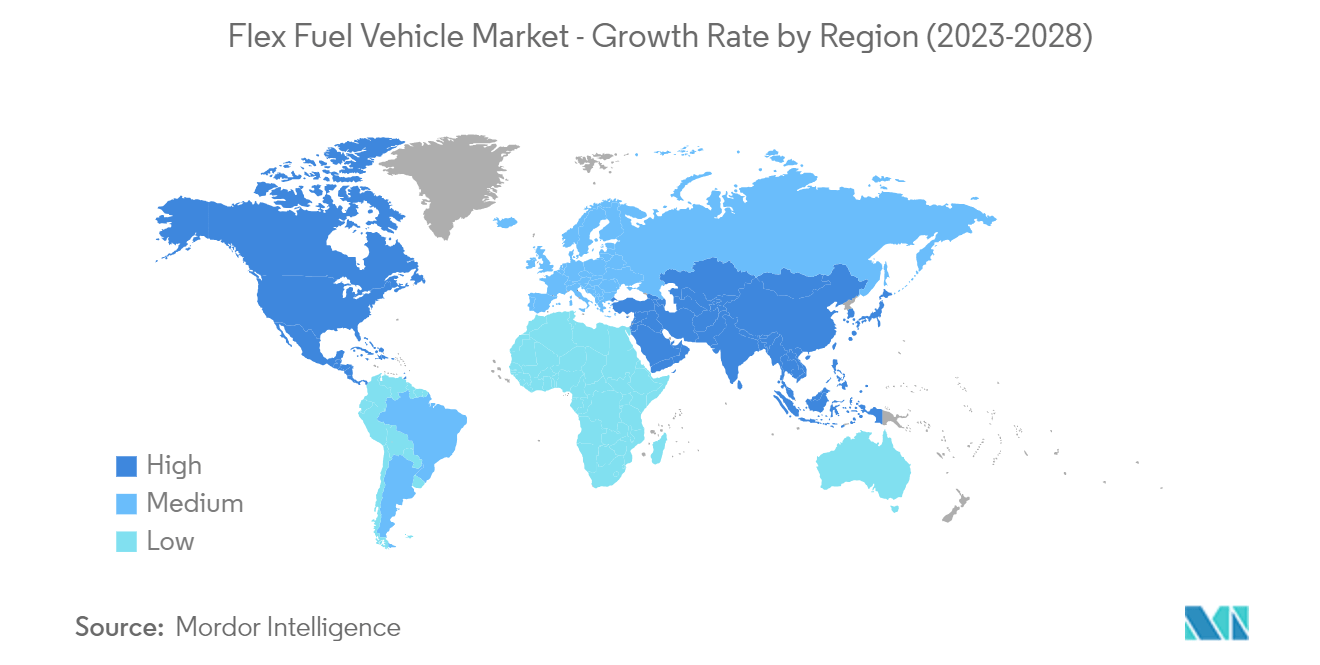Market Trends of Flex-fuel Vehicle Industry
Ratification of Stringent Exhaust Emission Regulations will Diesel Fuel Type Segment
- The increase in vehicle exhaust emissions from all types of vehicles using fossil fuels has contaminated the atmosphere. The poor air quality has led to an increase in a plethora of serious respiratory diseases. In Europe, vehicular pollution contributes to over 30% of total air pollution, including NOx, VOCs, PM2.5, PM10, and others.
- To bring exhaust emissions under control, country-specific vehicle authorities have barricaded the production of greenhouse gasses like NOx, SOx, and other harmful pollutants from vehicle tailpipes.
- For instance, in Europe, exhaust emission norms have become even more strict over the years. According to the regulatory authority European Environmental Agency (EEA), in Euro 4, launched in 2005, the NOx standards were affixed at 0.08g/km, whereas in 2009, it got reduced to 0.06g/km, and it has remained the same for light passenger cars since.
- Similarly, for CO2 emissions in 2015, standard passenger cars were not allowed to exceed 130g/km of CO2. In 2020, it was revised to 95g/km. The European Commission also targets to reduce this number to 70g/km by 2025.
- The reduced amount of greenhouse gases from the exhaust will have a significant impact on health in the long run. Alongside, this will also allow the flex-fuel market to witness an increase in demand in the upcoming years as it is a clean-burning fuel as compared to conventional diesel.

Asia-Pacific to Witness Significant Growth
- More than 70% of the countries in the Asia-Pacific region currently rely upon the import of fossil fuels to run vehicles. The cost of crude oil and its refinement significantly increases the consumer cost of fuel. With emerging markets like India and China, the Asia-Pacific region is expected to witness significant growth.
- For instance, in India, to curb the consumption of fossil fuels and tone down fuel costs, MoRTH (Ministry of Road Transport and Highways) has put forward various deadlines to introduce ethanol-based fuel in the country. Additionally, India accounts for 2% of the global flex-fuel production, which is not enough to fulfill the country's requirements. Hence, the domestic production of ethanol is targeted to rise from 70 to 150 million liters in the next few years.
- The transport ministry is planning to roll out the use of ethanol-based fuel in phases. E10 production is expected to be in motion from April 2022 and E20 from 2025. Various vehicle manufacturers in the country have also been notified to scale up the research to run vehicles on E10 from April 2023 and E20 from April 2025.
- As flex fuels can be manufactured domestically using renewable materials like sugar cane, the ethanol-blended fuel will reduce the quantity of raw fuel imported, helping reduce the fuel cost for end users.
- With the increase in the availability of ethanol-based flex-fuel, the demand for flex-fuel vehicles may witness significant growth as India is the world's second-most populated country.


